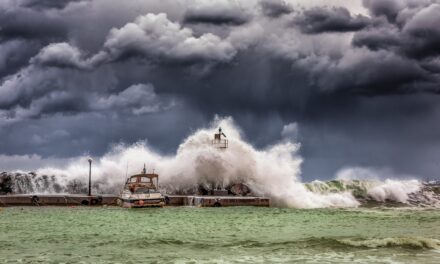In today’s world, where natural disasters, pandemics, and unexpected emergencies are not just possibilities but realities, the importance of having a family disaster preparedness plan cannot be overstressed. The thought of facing a disaster can be daunting, but being prepared can make all the difference. A well-crafted disaster plan not only provides peace of mind but can also be a lifesaver in times of crisis.
Why is a family disaster preparedness plan essential? The simple answer lies in the unpredictability of emergencies. Whether it’s a natural disaster like an earthquake, flood, or hurricane, or a man-made event such as a power outage or chemical spill, the immediate aftermath can be chaotic and frightening. Having a plan ensures that every family member knows what to do, where to go, and how to stay safe, which is crucial when every second counts.
Creating a disaster preparedness plan involves more than just discussing ‘what ifs.’ It’s about taking proactive steps to ensure your family’s safety and well-being. This article will guide you through the key components of a comprehensive family disaster plan, including communication strategies, emergency supplies, evacuation routes, and more. Our aim is to provide you with practical, actionable advice that will help you prepare for the worst while hoping for the best.
Before delving into the specifics of creating a plan, it’s important to understand the types of disasters you might face. Depending on where you live, certain disasters may be more likely than others. It’s critical to tailor your plan to address these specific risks. Additionally, consider the unique needs of your family members, including pets, the elderly, or those with special medical requirements.
Remember, preparation is not a one-time event but an ongoing process. As your family grows and changes, so should your preparedness plan. Regularly reviewing and updating your plan ensures that it remains effective and relevant.
In the following sections, we will explore the essential steps to creating a robust family disaster preparedness plan. By the end of this article, you’ll have the knowledge and tools to develop a plan that gives you confidence and a sense of control, even in the face of uncertainty.
Comprehensive Guide to Emergency Planning
Developing a family disaster preparedness plan requires a systematic approach. Let’s delve into the critical components of an effective emergency plan.
Communication is Key
During a disaster, communication can be challenging. Establish a family communication plan that includes emergency contact information, a central meeting place, and an out-of-town contact person. Ensure that all family members, even children, understand how to reach each other and where to meet if separated. Consider the limitations of communication during disasters, such as cellular network overloads, and plan alternative communication methods like text messages or social media check-ins.
Knowing Your Risks
Understand the types of disasters most likely to occur in your area. Whether it’s hurricanes, wildfires, earthquakes, or floods, each disaster has unique challenges. Tailor your plan to these risks, considering factors like evacuation routes, safe zones in your home, and the likelihood of being cut off from utilities or emergency services.
Emergency Supply Kit
An essential part of preparedness is having an emergency supply kit ready. This kit should include basic necessities like water, non-perishable food, a first-aid kit, medications, flashlights, batteries, and important documents. Don’t forget about specific needs like pet supplies, baby items, or special medical equipment. Regularly check and update your kit to ensure everything is functional and up-to-date.
Evacuation Plan
Know your evacuation routes and have a plan for where to go if you need to leave your home quickly. Discuss different scenarios with your family and practice evacuation drills. Make sure everyone knows the fastest, safest way out of your home and where to regroup outside.
Sheltering in Place
In some situations, it’s safer to stay where you are. Know when and how to shelter in place. This could involve sealing windows and doors in case of chemical hazards or finding a safe room in your home during a tornado.
Special Considerations
Every family is unique. Consider the specific needs of elderly family members, children, and those with disabilities. Make arrangements for pets, as many emergency shelters do not allow animals.
Stay Informed
Stay updated with the latest information from reliable sources like local news, weather channels, and emergency services. Consider investing in a weather radio that works even when the power is out.
By covering these aspects, you can ensure that your family disaster preparedness plan is thorough and effective. In the next section, we will summarize the key takeaways and provide additional resources for further information.
Essential Takeaways and Further Resources
In conclusion, creating a comprehensive family disaster preparedness plan is not just about having supplies ready; it’s about fostering communication, understanding risks, and practicing your response to various scenarios. Here are the key takeaways from our discussion:
- Effective Communication: Establish and regularly review your family communication plan, ensuring everyone knows how to get in touch and where to meet during emergencies.
- Risk Assessment: Tailor your emergency plans to the specific disasters likely in your area, considering all possible scenarios.
- Emergency Kit: Maintain a well-stocked and regularly updated emergency kit, catering to the unique needs of each family member, including pets.
- Evacuation and Shelter: Practice evacuation routes and understand how to shelter in place if needed. Ensure everyone knows the safest routes and procedures.
- Special Needs: Account for the needs of all family members, including those with disabilities, the elderly, children, and pets.
- Stay Informed: Keep up-to-date with the latest information from credible sources and consider investing in a weather radio.
For more detailed information and resources, the following websites and organizations provide extensive guidance on disaster preparedness:
- Ready.gov: A national public service campaign offering practical advice on preparing for and responding to emergencies.
- American Red Cross: Offers comprehensive resources on disaster preparedness, first aid, and recovery.
- Federal Emergency Management Agency (FEMA): Provides resources for disaster relief and emergency management.
Remember, preparedness is a continuous process. Regularly reviewing and practicing your plan ensures that your family remains ready to face any emergency effectively. Stay safe, stay prepared.








